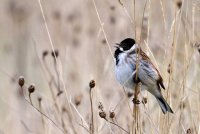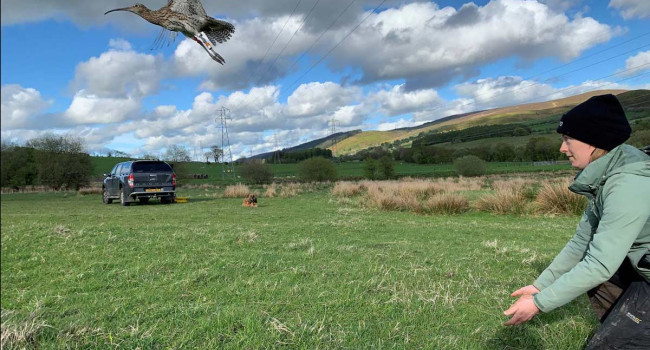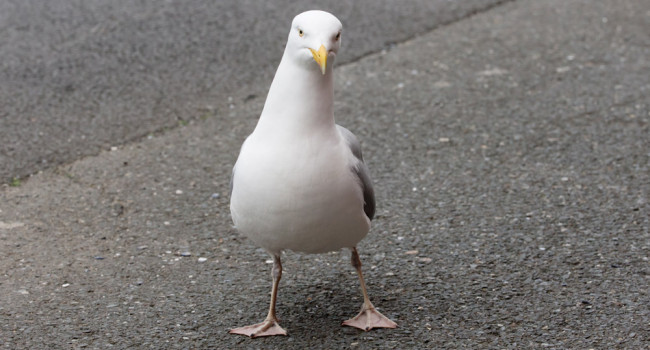Rain stopped play: 2012 breeding season worst on record for many nesting birds
01 Nov 2012 | No. 2012-46
The legacy of the atrocious summer weather on Britian & Ireland’s human population is still very much in evidence, and reports of reductions in invertebrate numbers, from bees to butterflies have been rife; but how did birds fare? Thanks to British Trust for Ornithology (BTO) volunteers, who braved the elements throughout the 2012 breeding season to collect the data summarised below, we have been able to construct a very accurate picture of one of the worst breeding seasons on record.
It wasn’t easy being a bird during the spring and summer of 2012, but then it wasn’t easy being a British Trust for Ornithology (BTO) volunteer either, with rainfall totals in April and June the highest ever recorded. Across Britain & Ireland, 4,000 survey participants braved the wet, windy conditions to monitor birds, taking advantage of the infrequent dry spells to monitor breeding success by visiting nests as part of the Nest Record Scheme (NRS) or by recording the number of fledged young ringed as part of the Constant Effort Site (CES) scheme.
The latest results from these BTO surveys show that many species struggled to raise young during 2012. “Caterpillars appear to have been in short supply during the cold, wet weather and many of the woodland birds dependent on them had a poor season,” noted Carl Barimore, NRS Organiser. “Blue Tit, Great Tit and Chaffinch fledged 13%, 18% and 58% fewer chicks respectively; this is the lowest productivity recorded for Chaffinch in almost 50 years and the second lowest for Great Tit over the same period. Rainfall may have made hunting difficult for raptor and owl species too, and Kestrel breeding success was also significantly lower than average.”
Results from the CES scheme showed that migrant birds also fared badly. “All eight of the migrant species monitored by CES experienced the worst breeding year since the scheme began 30 years ago,” reported Allison Kew, CES Organiser. “These estimates relate to the numbers of free-flying juveniles ringed, so are likely to reflect losses in the nest and the low survival rates of young birds after they have left it - their inexperience in foraging and poor quality plumage is likely to be a disadvantage in wet, windy conditions. Wetland species such as Reed Warbler and Reed Bunting were also directly affected by flooding.”
But will the poor season in 2012 have a lasting effect on our birds? “There is no doubt that many fewer young birds fledged this year and current predictions of another cold winter suggest that survival rates over coming months may be low”, explains Dr Dave Leech, a Senior Research Ecologist at BTO. “This is likely to have a negative impact on abundance at the start of the 2013 season, but many of the smaller bird species are able to rapidly produce large numbers of young, and so have the potential to bounce back quickly after a single bad year. The worry is that the extreme conditions in 2012 were the result of a shift in the position of the jet stream and it is very difficult to predict how increasing global temperatures and melting of the Arctic ice will influence this in future. If these conditions become more frequent, they could have long-term consequences for Britain & Ireland’s bird populations.”
Without the perseverance of BTO volunteer surveyors, none of this information would be known, as Dr Andy Clements, BTO Director, acknowledges: “During a summer like the one we have just had, it would be very easy to take one look out of the window and decide to stay indoors instead. The determination displayed by our surveyors is testament to their passion for conservation. Thanks to their dedication we are able to build an accurate picture of the impact of these adverse conditions on our bird populations.”
Notes for Editors
- Under the BTO/JNCC Nest Record Scheme (NRS - http://www.bto.org/NRSprelim2012), established in 1939, volunteer nest recorders gather vital information on the productivity of the UK’s birds, using simple, standardised techniques. Over 35,000 records, each detailing the contents of individual nests, are currently submitted each year, allowing long-term trends in breeding success to be produced for over 70 species.
- The Nest Record Scheme is funded by a partnership of the BTO and the JNCC (on behalf of: Council for Nature Conservation and the Countryside, the Countryside Council for Wales, Natural England and Scottish Natural Heritage).
- The BTO/JNCC Constant Effort Sites (CES – http://www.bto.org/CESprelim2012) scheme is the first national standardised ringing programme within the BTO Ringing Scheme and has been running since 1983. Volunteer ringers operate the same nets in the same locations over the same time period at regular intervals through the breeding season at 130 sites throughout Britain and Ireland. The Scheme provides valuable trend information on abundance of adults and juveniles, productivity and also adult survival rates for 25 species of common songbird.
- The Constant Effort Sites scheme is funded by a partnership of the BTO, the JNCC (on behalf of: Council for Nature Conservation and the Countryside, the Countryside Council for Wales, Natural England and Scottish Natural Heritage), The National Parks and Wildlife Service (Ireland) and the ringers themselves.
- NRS and CES data are analysed annually and the results are published in the BirdTrends Report (www.bto.org/birdtrends) along with information on species’ abundance obtained through other BTO monitoring schemes.
- The BTO is the UK’s leading bird research organisation. Over 30,000 birdwatchers contribute to the BTO’s surveys. They collect information that forms the basis of conservation action in the UK. The BTO maintains a staff of 100 at its offices in Norfolk and Stirling, who analyse and publicise the results of project work. The BTO’s investigations are funded by government, industry and conservation organisations. www.bto.org
- The Joint Nature Conservation Committee (JNCC) is the statutory adviser to the UK Government and devolved administrations on UK and international nature conservation. Its work contributes to maintaining and enriching biological diversity, conserving geological features and sustaining natural systems. www.jncc.gov.uk.
Contact Details
Dr Dave Leech
(BTO Senior Ecologist)
Office: 01842 750050
(9am to 5.30pm)
Email: dave.leech [at] bto.org
Paul Stancliffe
(BTO Media Manager)
Office: 01842 750050
(9am to 5.30pm)
Mobile: 07585 440910 (anytime)
Email: press [at] bto.org
Images are available for use alongside this News Release.
Please contact images [at] bto.org quoting reference 2012-46
The BTO has an ISDN line available for radio interviews
Please contact us to book an interview
Office: 01842 750050







Share this page